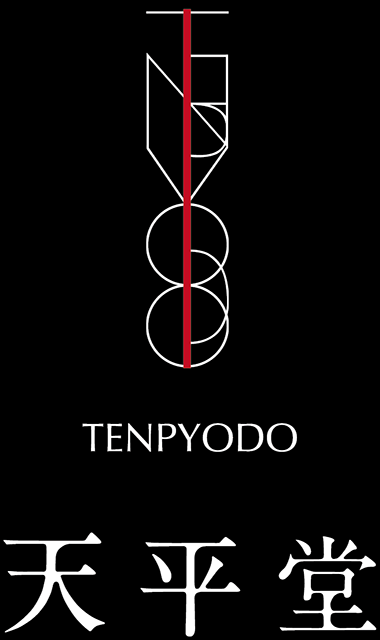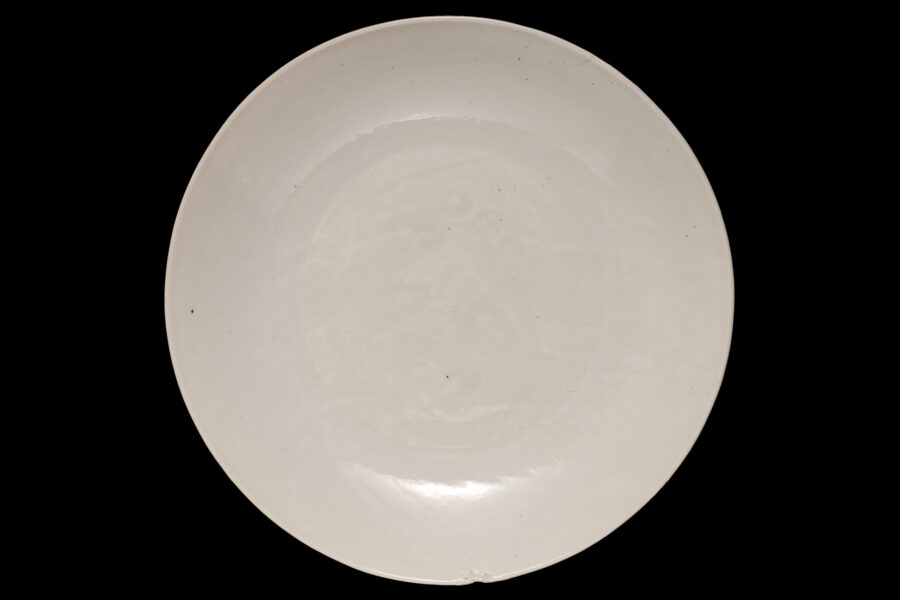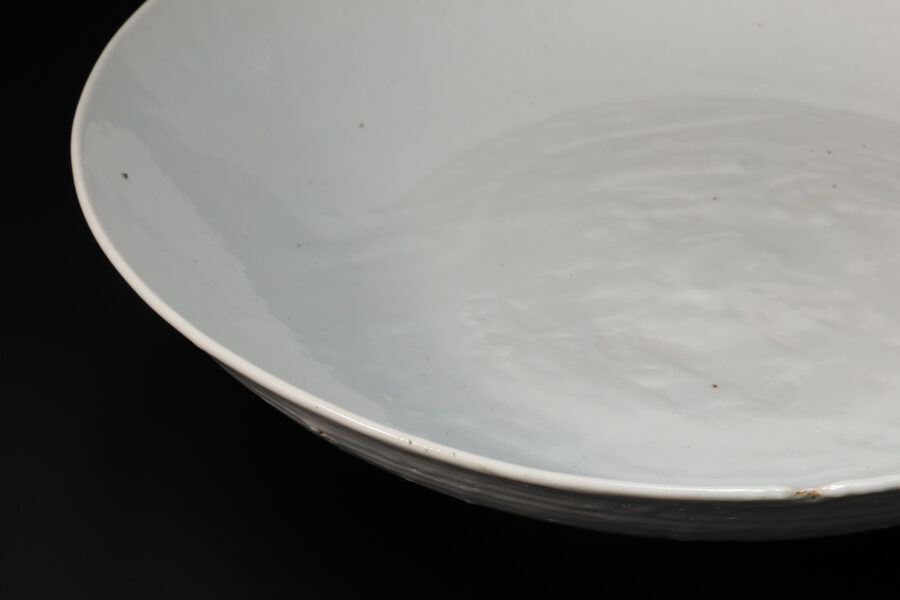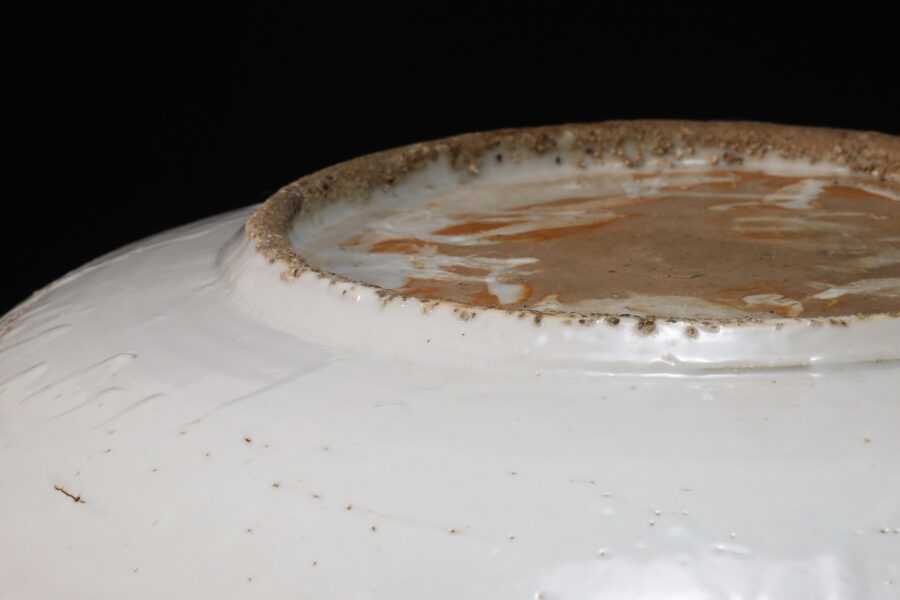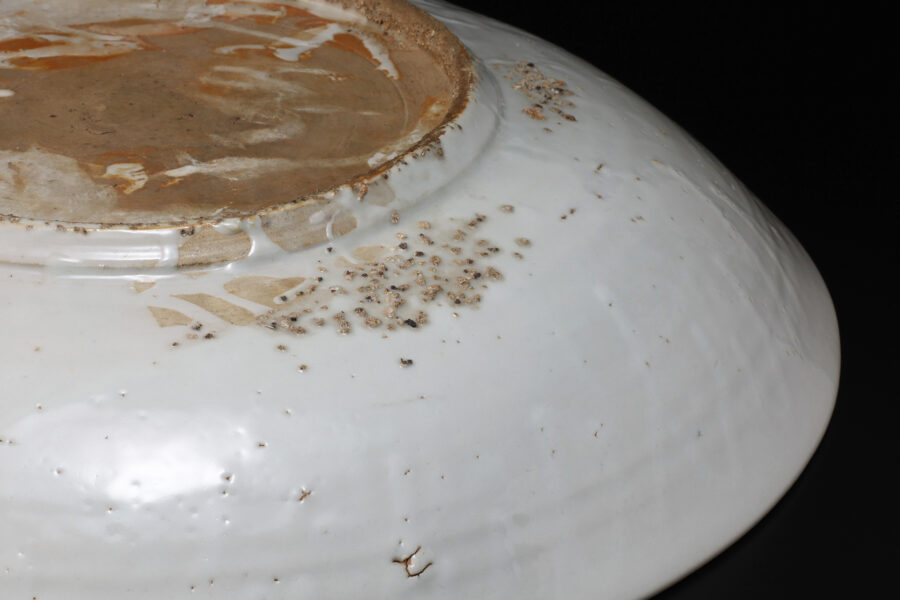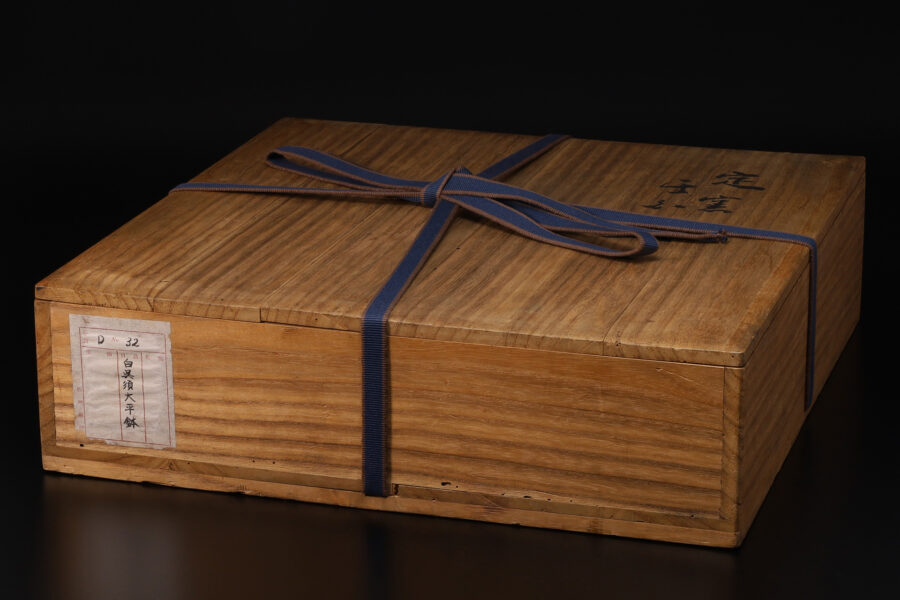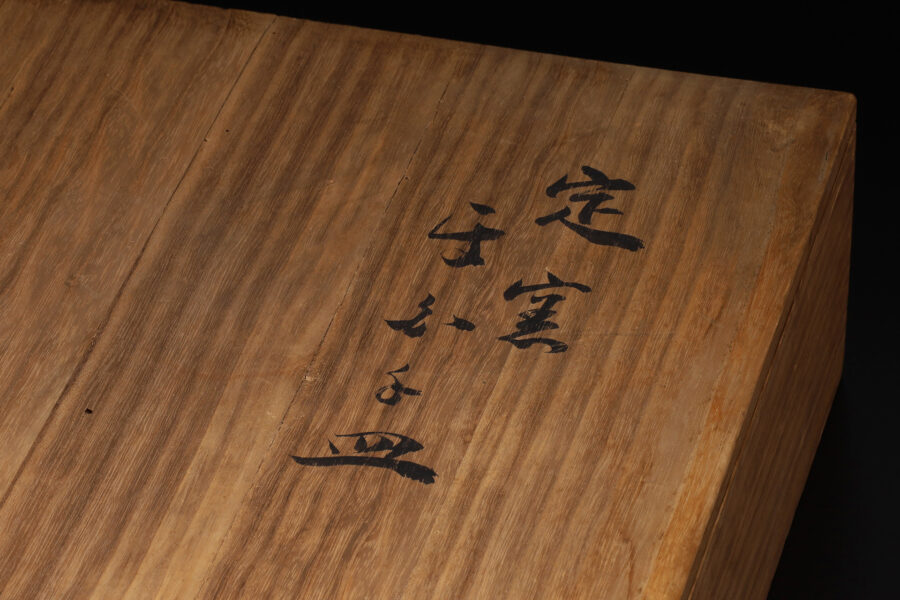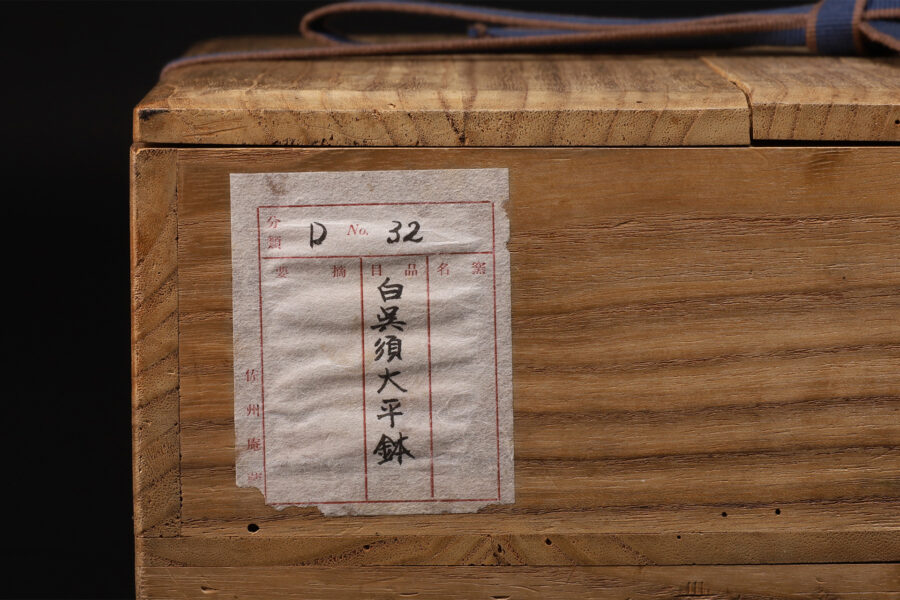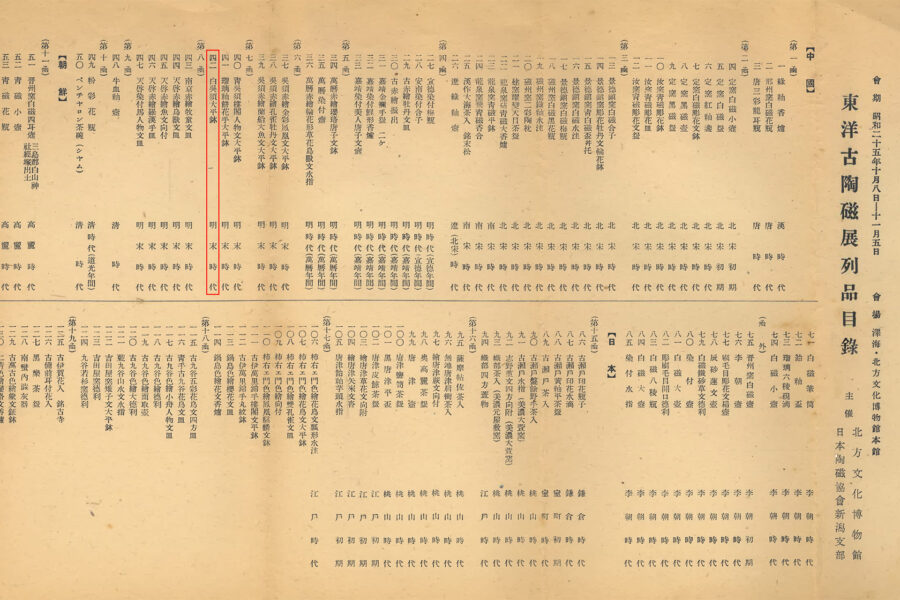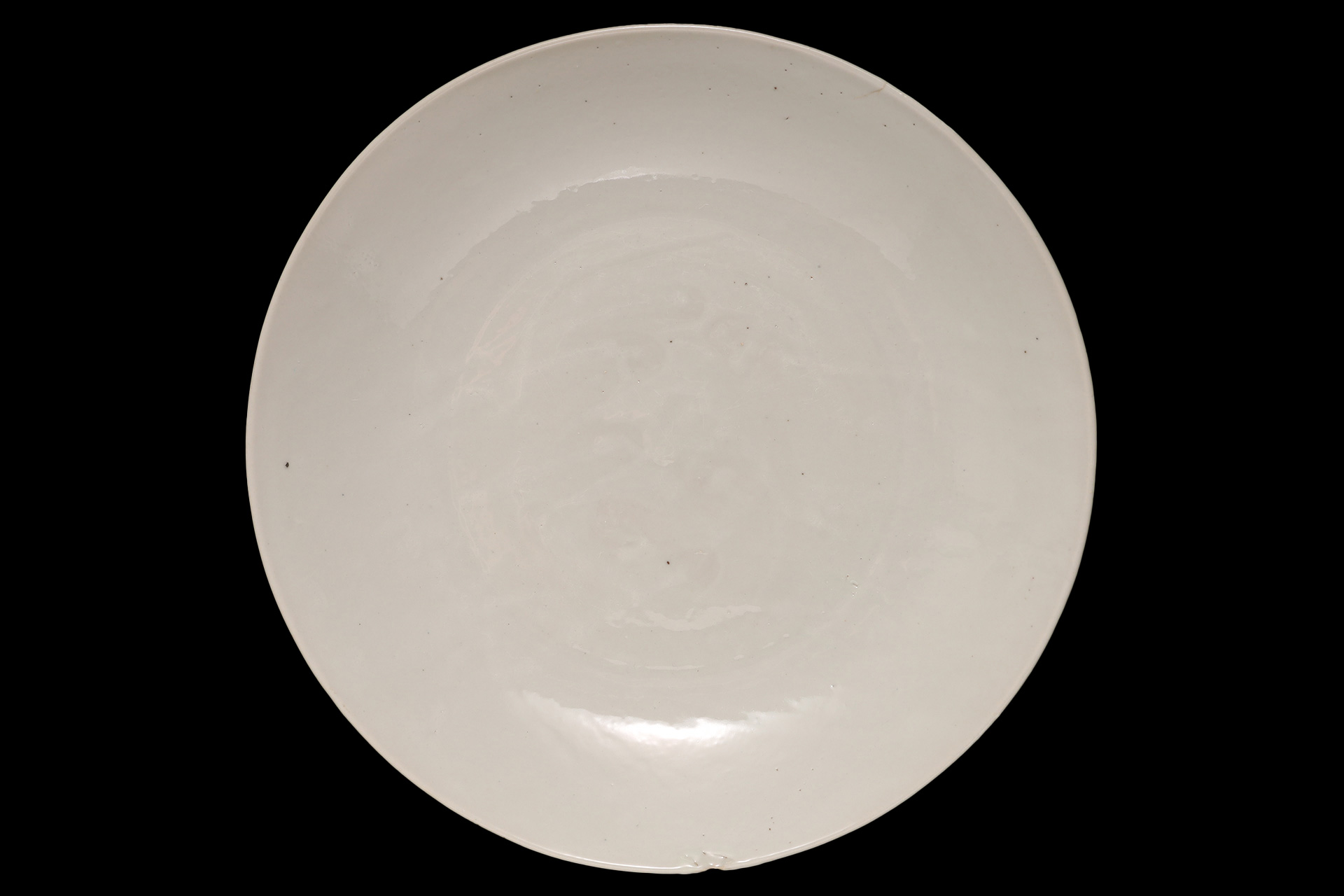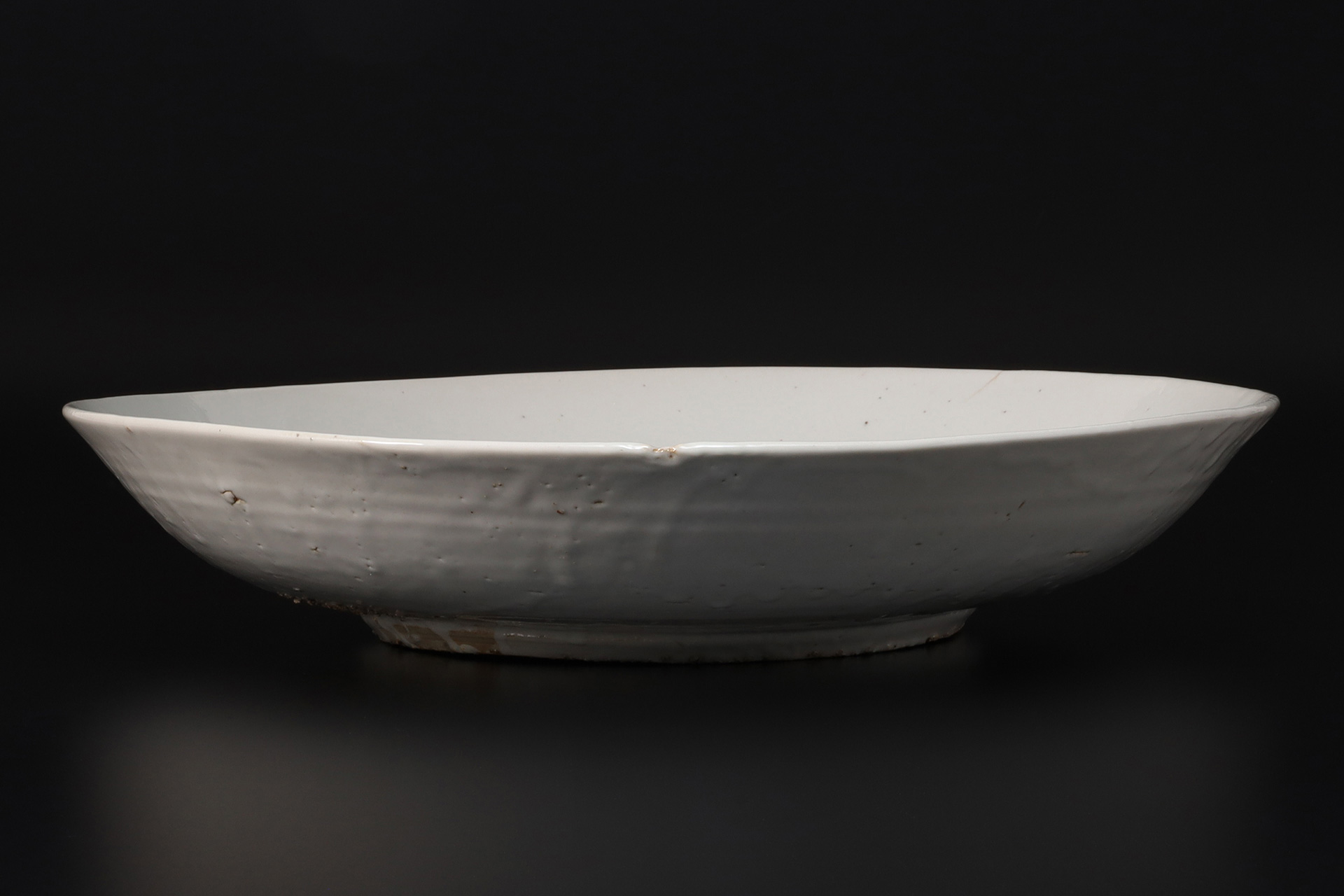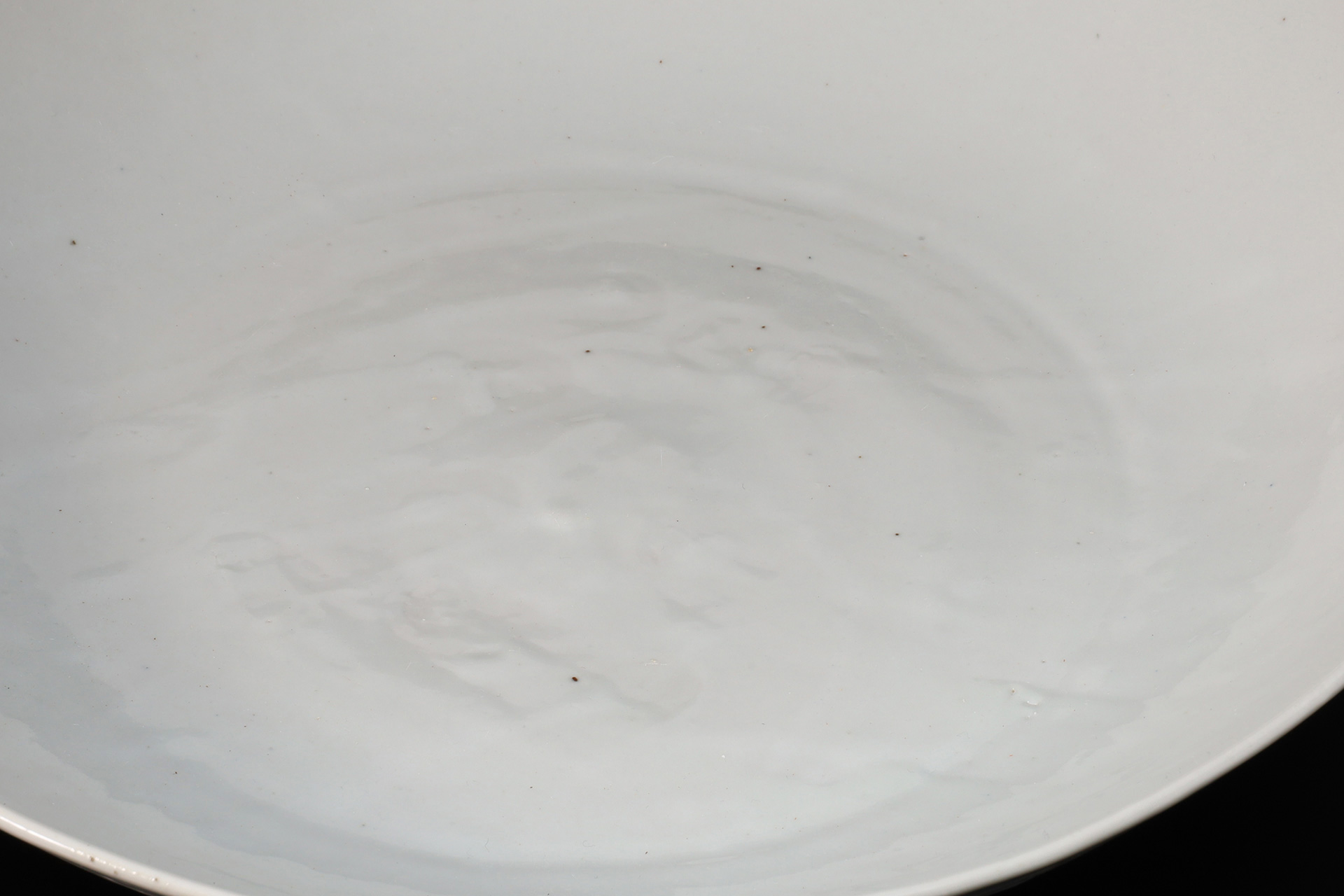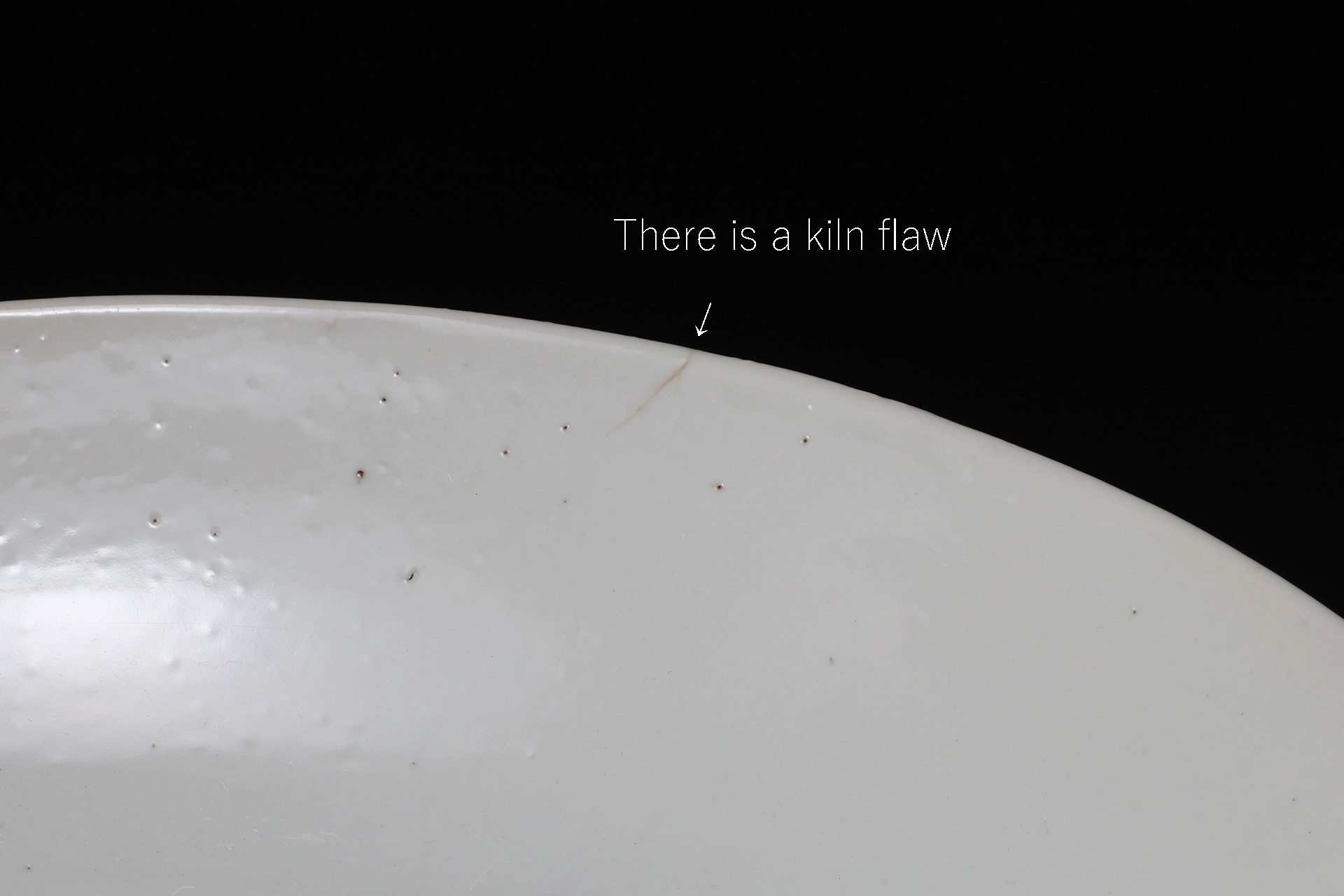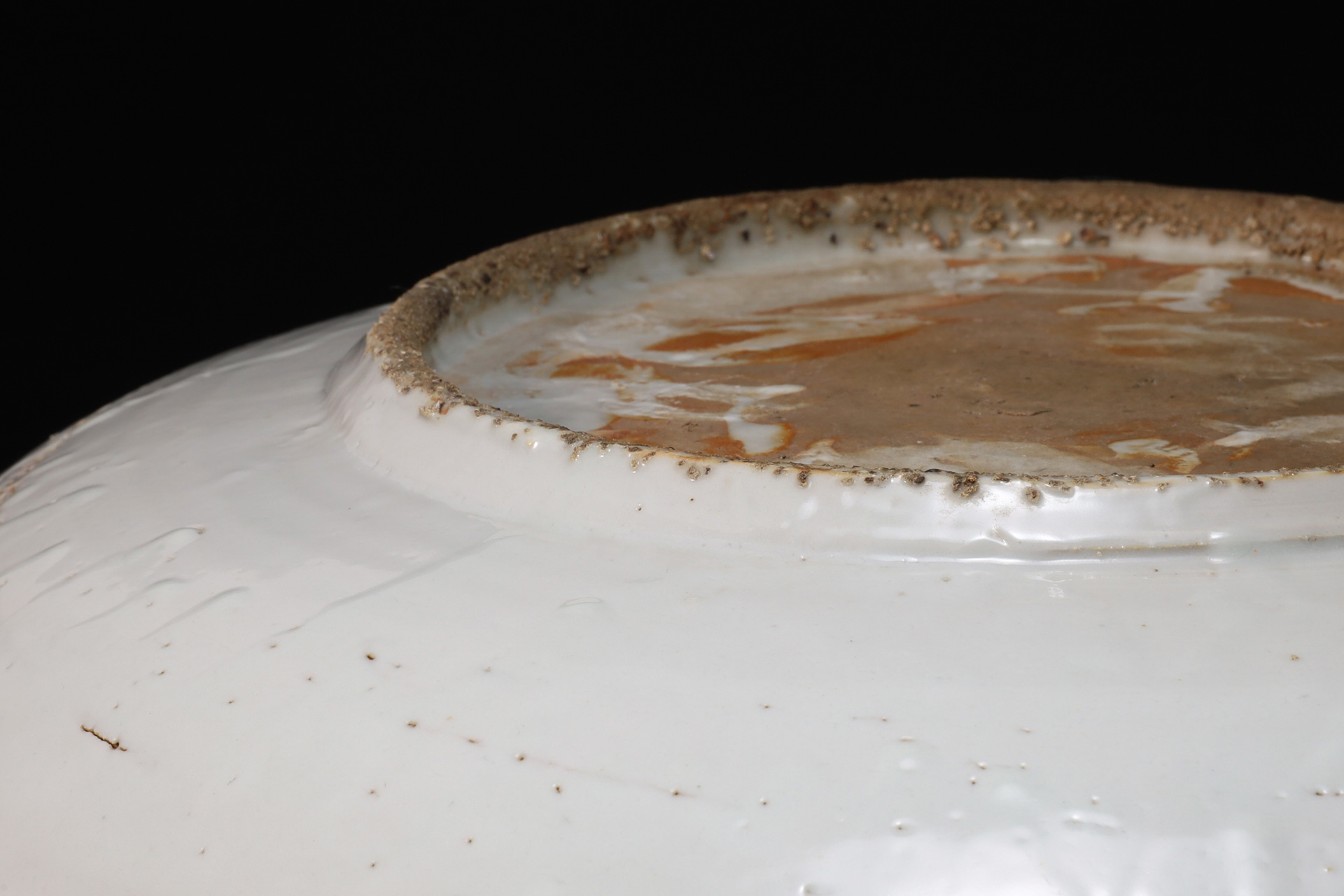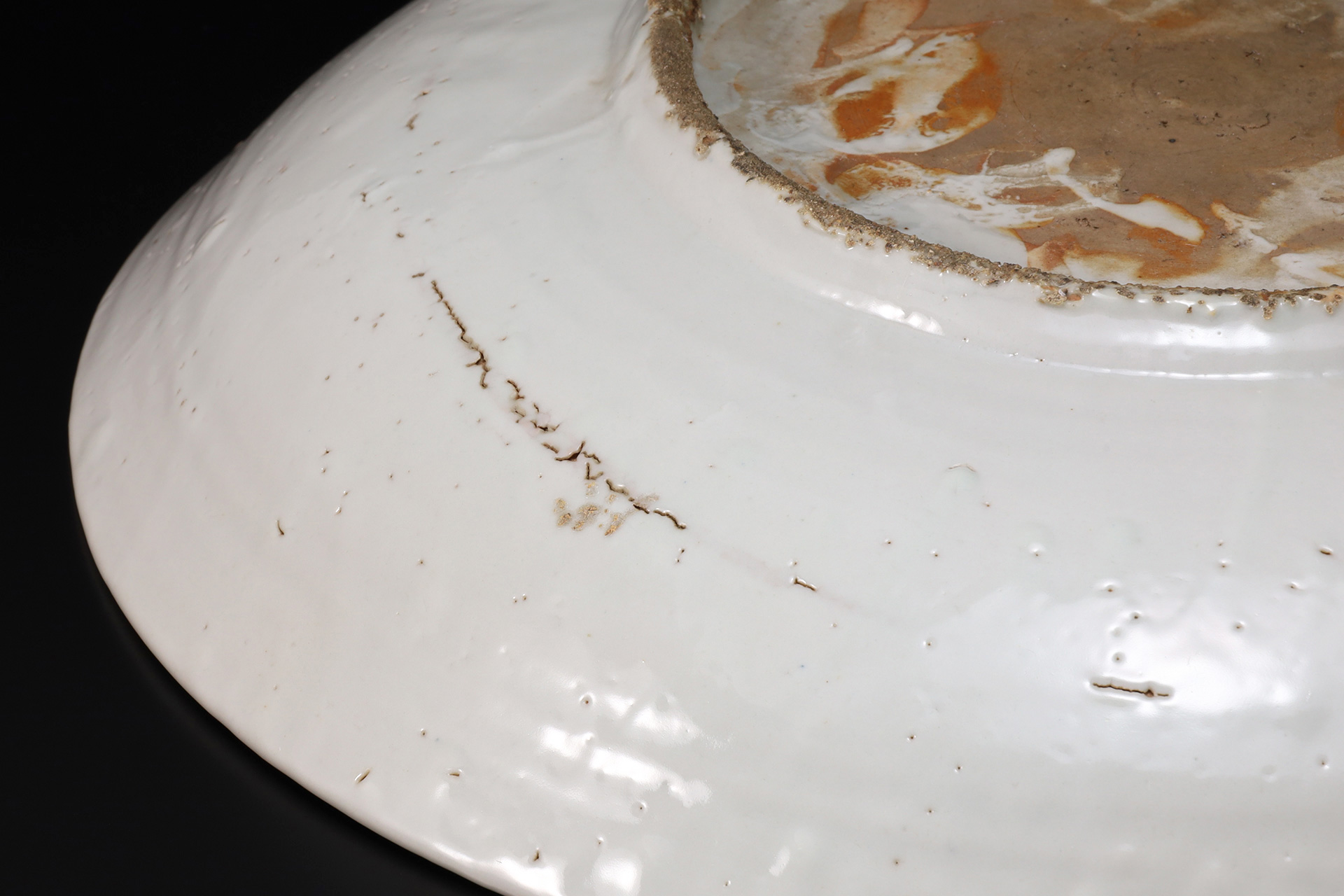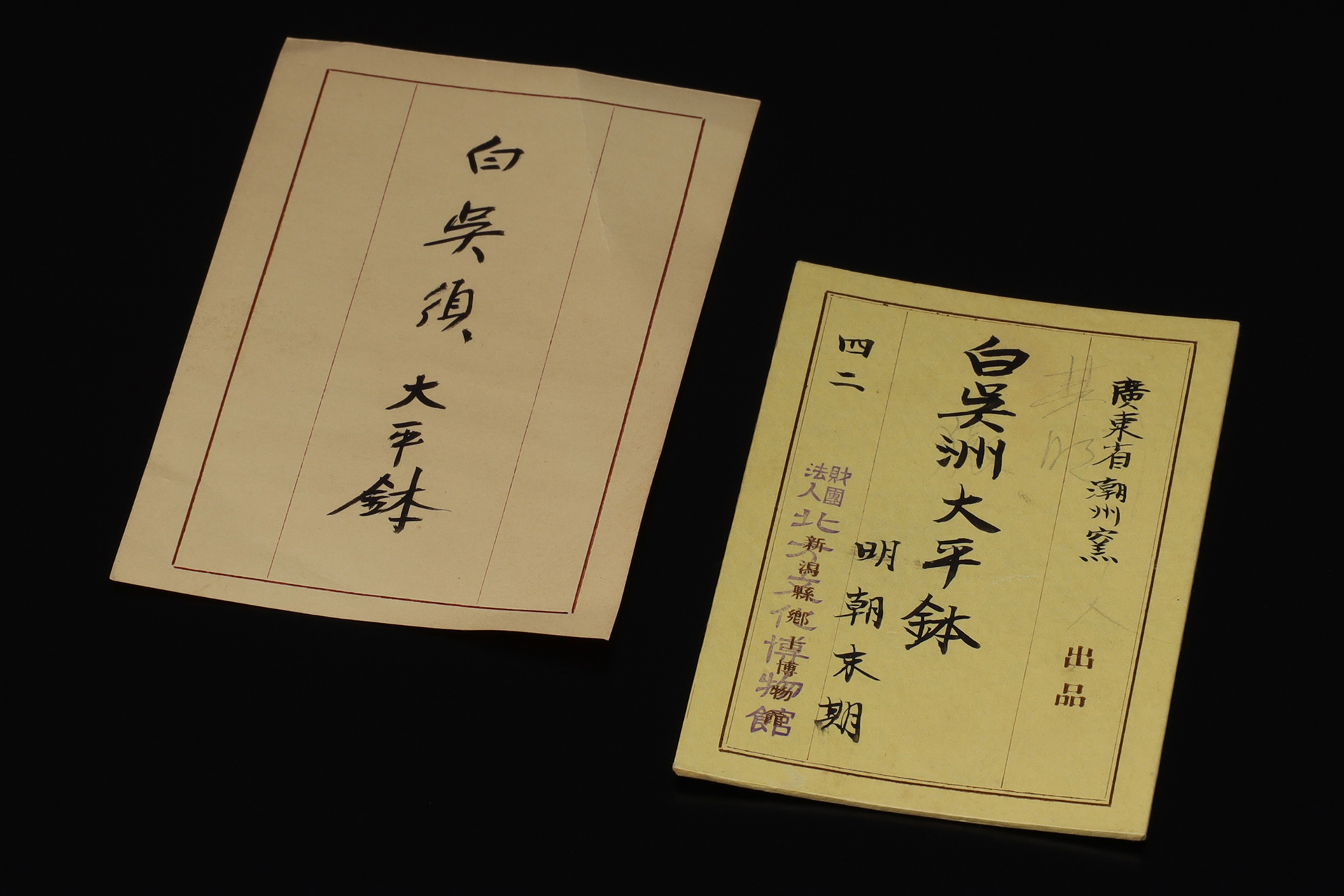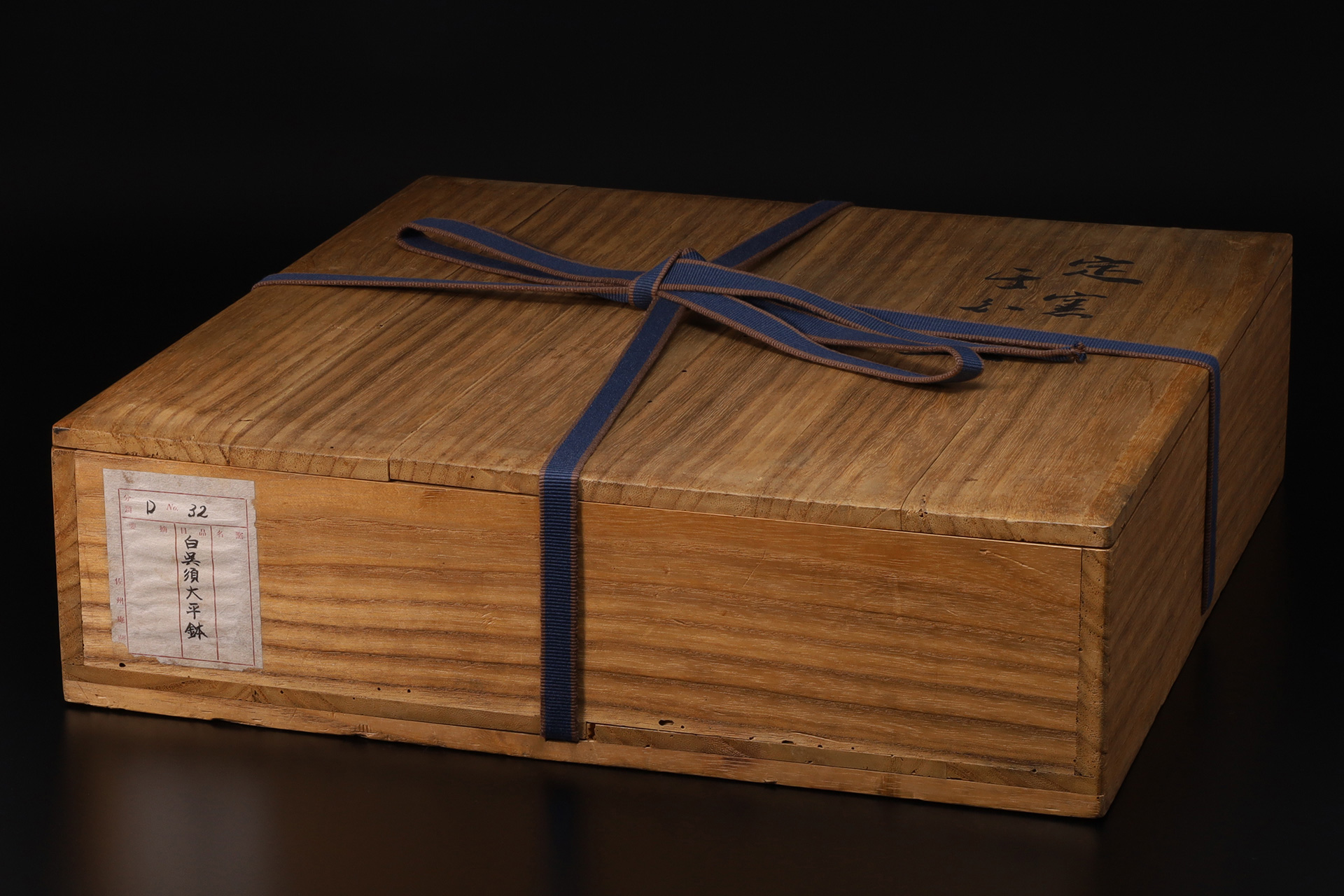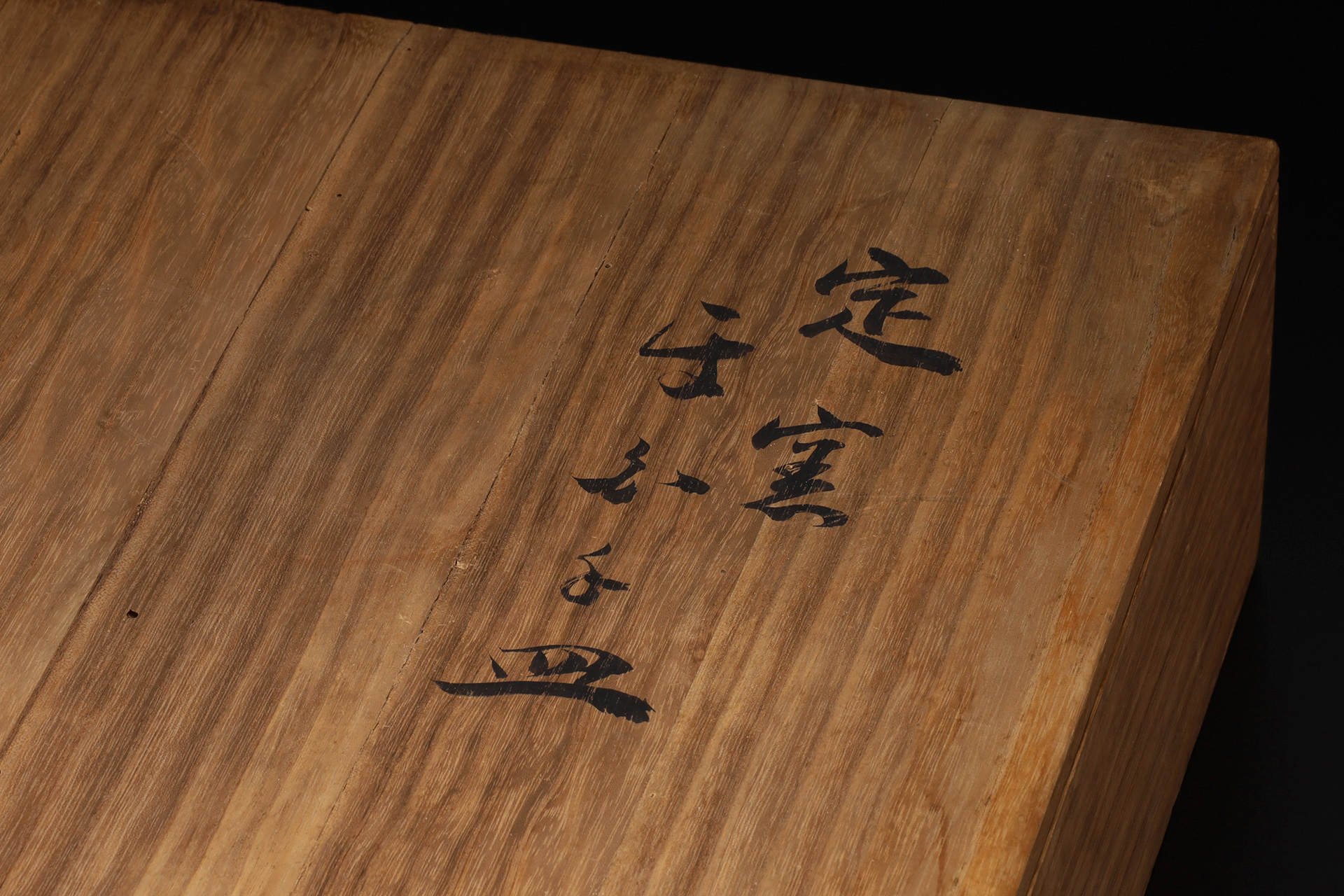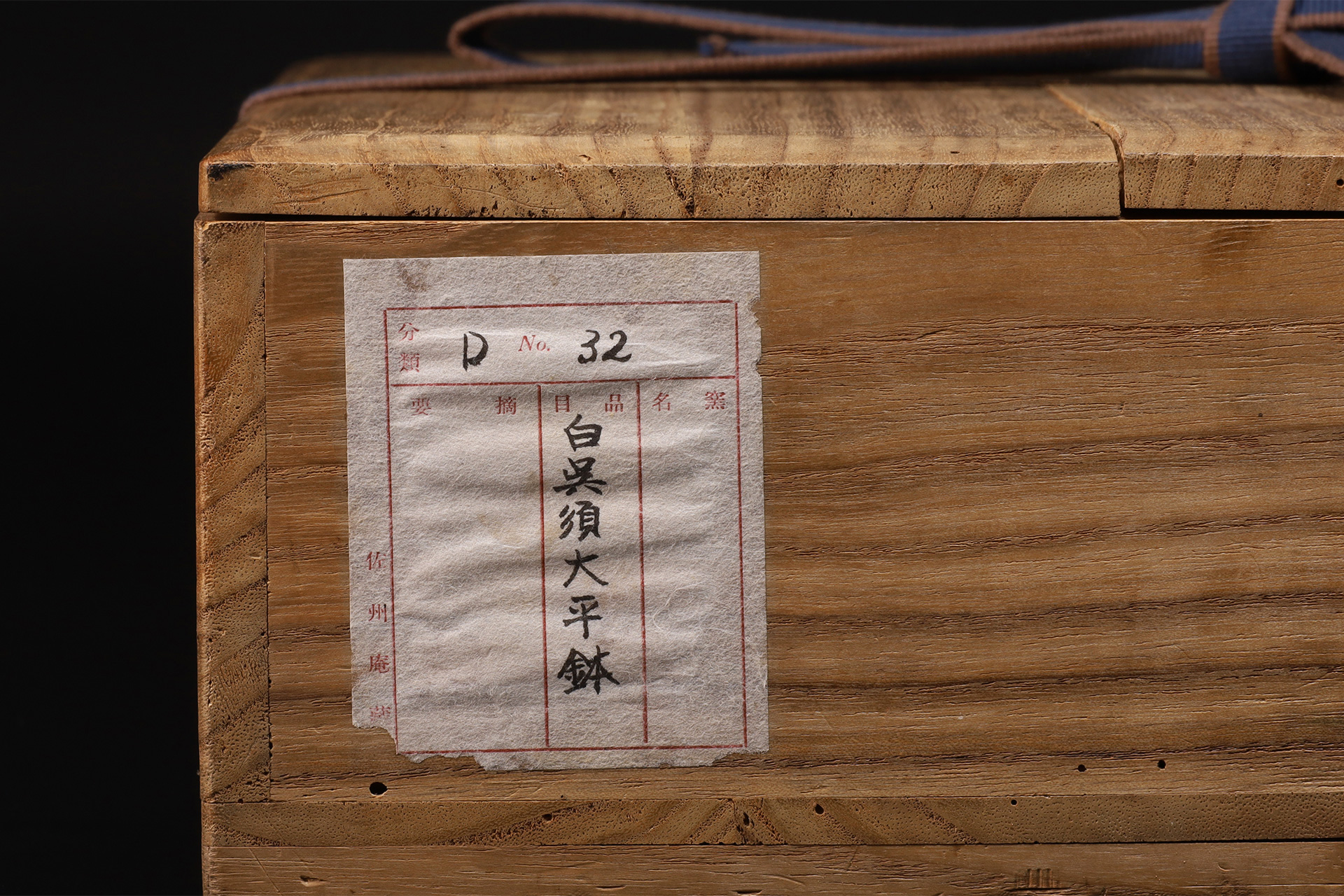Among the various Gosu techniques—such as gosu aka-e (overglaze red painting), gosu sometsuke (underglaze blue), and mochibana-de (puffed floral motifs)—shiro gosu remains a rare and distinctive form. Its white expanse gently receives the colors of cuisine and confectionery, allowing each to reflect and enhance the other's beauty. This piece was exhibited in the Exhibition of Ancient East Asian Ceramics held at the Northern Culture Museum in 1950.
Inquiry
- Product Code
- 250921-2
- Period
- Ming Dynasty
Early 17th Century
- Weight
- 1,840g
- Diameter
- 38.4cm
- Height
- 7.8cm
- Bottom Diameter
- 18.5cm
- Fittings
- Paulownia Box
- Provenance
- Exhibited Work from the Northern Culture Museum
- Condition
- Intact
There is a kiln flaw on the rim
It is relatively thinly potted and exhibits a gentle ash-white tone. Kiln flaws incurred during the production process are visible along the rim, yet the piece remains in good condition.

Gosu-de
Gosu-de refers to a category of coarse ceramics fired mainly during the late Ming dynasty at the Zhangzhou kilns in southern Fujian Province, China. These wares typically feature a rough clay body coated with white slip, and are known for their diverse decorative styles, including gosu aka-e (overglaze red painting), gosu sometsuke (underglaze blue), shiro gosu (white slip with minimal decoration), and mochibana-de (puffed floral motifs). These ceramics were widely exported throughout Southeast Asia and to Japan, primarily via the port of Shantou in Guangdong Province. As a result, they came to be known in the West as “Swatow ware.” The origin of the term “gosu” is uncertain. One theory suggests it derives from the name of the Song dynasty literatus Zhao Ziguo (趙子昴), reversed and used to refer to clumsy painting as “Gosu.” Another, more widely accepted theory holds that “gosu” refers broadly to the southern regions of China, which were vaguely called “Go” (呉) in Edo-period Japan. Thus, “Gosu-de” would mean “wares from the southern lands of China.”
